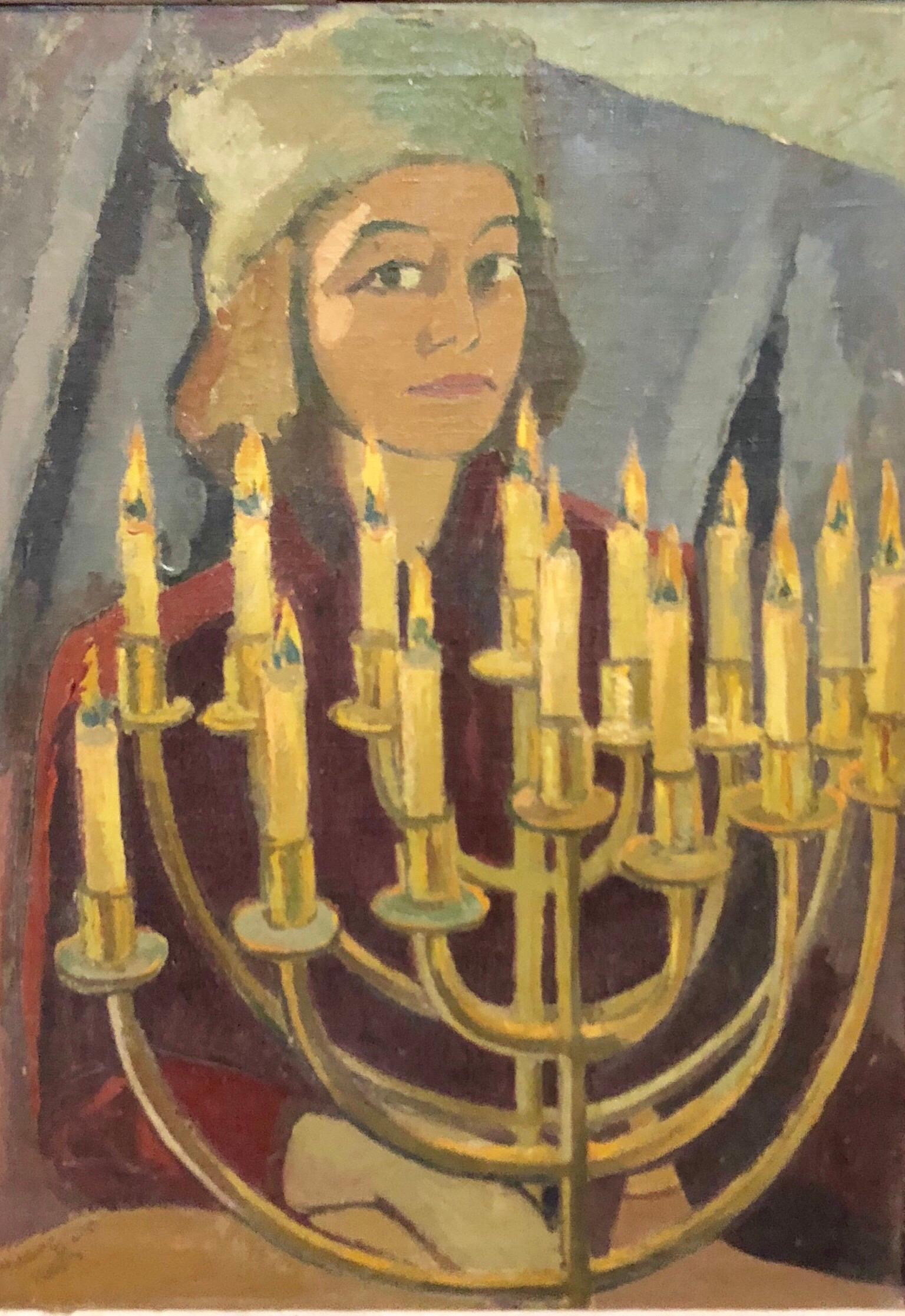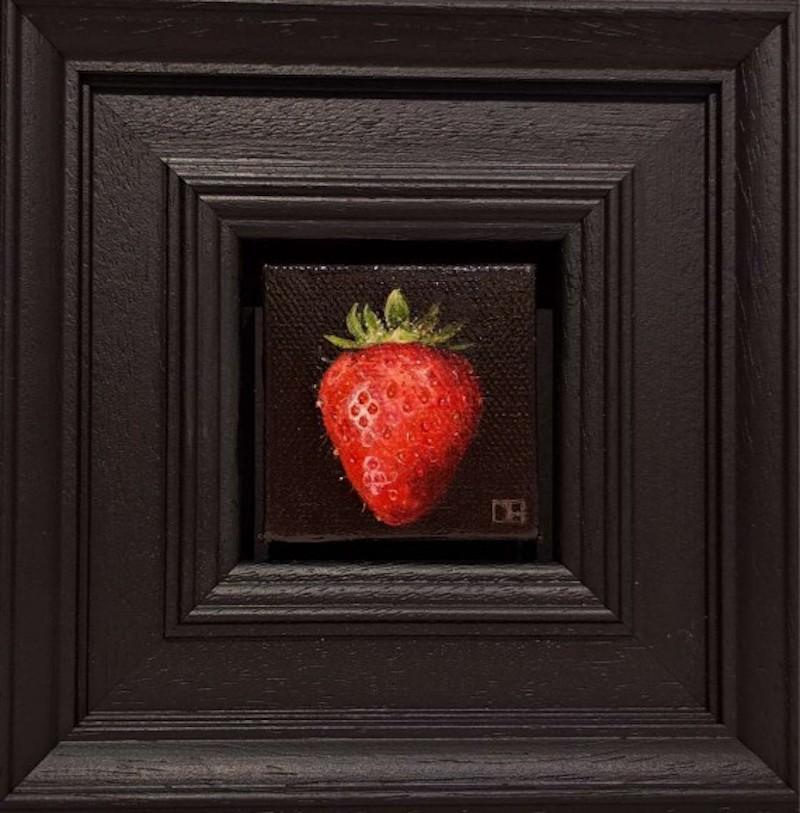Items Similar to "Nature Morte" Fruit Bowl, Tea Pot and Cup, Oil on Canvas by Spanish Celso Lagar
Want more images or videos?
Request additional images or videos from the seller
1 of 15
Celso Lagar"Nature Morte" Fruit Bowl, Tea Pot and Cup, Oil on Canvas by Spanish Celso Lagar1915
1915
About the Item
CELSO LAGAR
Spanish, 1891 - 1966
NATURE MORTE
signed "Lagar" lower left
oil on canvas
18-1/4 X 21-3/4 inches (46 X 55 cm.)
framed: 23-3/8 X 27-1/8 (59 X 68.5 cm.)
PROVENANCE
Private French Collector
Lagar was the creator of "Planismo", one of the many artistic styles that emerged from the Spanish avant-garde of the early twentieth century. This "Still Life" is a significant example of this ephemeral life movement that became known in 1915 and disappeared in 1920, which combined elements from Fauvism, Futurism and Cubism, which Lagar had similarized in Parin between 1910 and 1914.
The space is organized in large planes of pure colors and despite its two-dimensionality, the painter is interested in highlighting the geometric volumes of objects.
Celso Lagar Arroyo (Ciudad Rodrigo, 1891 - Seville, 1966) was an expressionist Spanish painter of the first generation of the School of Paris, where he lived most of his life. He was influenced by avant-gardes of all kinds, such as cubism and fovism. He painted mainly landscapes and still lifes. From a personal point of view, he is a depressive person and completely dependent on his wife, the French sculptor Hortense Begué.
From his native Ciudad Rodrigo, he went to Madrid to be part of the workshop of one of the best sculptors of the moment, Miguel Blay.1 During 1910 and 1911 he visited Barcelona. Later he studied sculpture in Paris in 1911 advised by Blay, where he met Joseph Bernard, his friend Amedeo Modigliani and his future wife, the French sculptor, Hortense Begué. It will be precisely at that moment when, gradually, he leaves the sculpture in favor of painting.
The outbreak of the First World War will mean, in the life and work of Celso Lagar, the beginning of a new stage. He remained in Barcelona during the war, where he achieved a certain recognition, which allows him to return to Paris. In 1919 he settled permanently in France. His time until the end of the 30s, is the moment of his greatest splendor of the artist. He manages to exhibit his works in the best Parisian galleries, his production is abundant and constant. Both in his residence in Paris and in his rooms, since 1928, in Normandy he will develop an artistic production with very specific themes: still lifes, Spanish reminiscences, landscapes and his celebrated circus scenes. After the period of avant-garde influences of all kinds (Cubism, Fauvism, Vibrationism, Biologism, Simultaneism, Ultraist, ...), Celso Lagar will find his own path marked mainly by Goyesque and Picasian inspiration. Critical and public recognition increases.
With the onset of World War II, its golden age will end. Lagar and Hortense are forced to take refuge in the French Pyrenees amid very difficult living conditions. His return after the liberation of Paris did not have such an impact. Lagar will continue with the same themes and techniques before the war but the public is already looking for new content. Gradually, success fades and economic hardships affect the couple.
At this time around the year 1950, his wife Hortense enters the hospital Broca and in 1955 dies. Lagar falls into a deep depression and will enter the psychiatric hospital of Sainte Anne. His artistic work ends completely. At that time, by court order, two auctions of the works that remained in his workshop are held, to pay for his stay in the asylum. In October 1964 he returned to Spain living in Seville with a sister until his death on September 6, 1966.
His paintings are found in numerous museums throughout Europe, such as: La Rochelle, Goya Museum in Castres, Honfleur (France), Petit-Palais de Geneva, Reina Sofía National Art Center Museum, Casa Lis de Salamanca, Carmen Thyssen Museum ( Malaga) and in prestigious collections such as Crane Kallman (London) or Zborowski (Paris).
He was illustrator of several magazines, among them, the Spanish Magazine Nova, Un enemic del Poble and Troços.
References
- Creator:Celso Lagar (1891 - 1966, Spanish)
- Creation Year:1915
- Dimensions:Height: 18.12 in (46 cm)Width: 21.66 in (55 cm)
- More Editions & Sizes:46 X 55 cm.Price: $19,771
- Medium:
- Movement & Style:
- Period:
- Condition:
- Gallery Location:Madrid, ES
- Reference Number:1stDibs: LU128115171962
About the Seller
5.0
Vetted Seller
These experienced sellers undergo a comprehensive evaluation by our team of in-house experts.
Established in 1977
1stDibs seller since 2019
21 sales on 1stDibs
Typical response time: 2 hours
- ShippingRetrieving quote...Ships From: Madrid, Spain
- Return PolicyA return for this item may be initiated within 14 days of delivery.
More From This SellerView All
- "Still Life" 20th Century Oil on Canvas by Spanish Artist Antoni ClavéBy Antoni ClavéLocated in Madrid, ESANTONI CLAVÉ Spanish, 1913 - 2005 STILL LIFE signed "Clavé" lower right also inscribed "Ce tableau a ete peint par moi vers 1946, Clavé" on the reverse oil on canvas glued to artist ...Category
1940s Abstract Still-life Paintings
MaterialsCanvas, Oil, Cardboard
- "Bouquet of flowers with mimosas", 20th Century Oil on Canvas by Moïse KislingLocated in Madrid, ESMOÏSE KISLING French-Polish, 1891 - 1953 BOUQUET OF FLOWERS WITH MIMOSA signed & dedicated "à Edith Mara", Kisling (lower left) oil on canvas 13 X 88-1/2 inches (33 X 22.5 cm.) frame...Category
1930s Expressionist Still-life Paintings
MaterialsOil, Canvas
- "Still Life with Fruits", Large, Early 20th Century Oil on Canvas by Celso LagarBy Celso LagarLocated in Madrid, ESCELSO LAGAR Spanish, 1891 - 1966 STILL LIFE OF FRUITS signed "Lagar" lower left oil on canvas 29-3/4 x 38 inches (75 x 96 cm.) framed: 33-1/2 x 41-3/4 inches (84.5 x 105.5 cm.) PROVENANCE Private French Collector Celso Lagar Arroyo (Ciudad Rodrigo, 1891 - Seville, 1966) was an expressionist Spanish painter of the first generation of the School of Paris, where he lived most of his life. He was influenced by avant-gardes of all kinds, such as cubism and fovism. He painted mainly landscapes and still lifes...Category
Early 20th Century Expressionist Still-life Paintings
MaterialsCanvas, Oil
- "Venice Twilight", 19th Century Oil on Canvas by Charles-Clément CalderonLocated in Madrid, ESCHARLES - CLÉMENT CALDERON French, 1870 - 1906 VENICE TWILIGHT signed "C. Calderon" (lower right) oil on canvas 15-1/4 x 21-3/4 inches (38.5 x 55 cm.) ...Category
Early 1900s Expressionist Figurative Paintings
MaterialsCanvas, Oil
- "Cesta de flores", 17th Century Oil on Canvas, Still Flowers by Juan de ArellanoBy Juan de ArellanoLocated in Madrid, ESJUAN DE ARELLANO Spanish, 1614 - 1676 Cesta de Flores signed Juan de Arellano (lower lright) oil on canvas original period carved, gilt and polychrome...Category
17th Century Old Masters Still-life Paintings
MaterialsCanvas, Oil
- Spanish 18th C. Oil on Canvas"Still Life with Walnuts, Melon, Grapes and Orange"Located in Madrid, ESSPANISH SCHOOL 18th CENTURY STILL LIFE WITH WALNUTS, MELON, GRAPES AND ORANGE unsigned oil on canvas 15-3/4 x 21 inches (40 x 53 cm.) framed: 24-1/2 x 28-3/4 inches (62 x 72.5 cm.) ...Category
18th Century Baroque Still-life Paintings
MaterialsCanvas, Oil
You May Also Like
- Still Life With HamLocated in Delray Beach, FLStill Life with ham, oil on canvas signed a wonderful example of the artist's work, from the Collection of Bass Museum Of Art. Canvas size 16 3/4 x 22 1/5 framed 23 x 29. Edmund Pick...Category
1920s Expressionist Still-life Paintings
MaterialsCanvas, Oil
- 1950's Expressionist Judaica Painting "I Lit All My Candles" Hanukkah MenorahBy Hildegard RathLocated in Surfside, FLHildegard Rath, (1909-1994) painter, author, teacher, and lecturer, Born in Wurttemberg, Germany, in the Black Forest region of Germany. Hildegard Rath became a painter of landscape, portraits, still lifes, and marine subjects and also a muralist. Her father was a bank president, her mother a sculptor, writer, and illustrator of children's books. At the age of 15, Miss Rath painted her first portrait in oil as a birthday present for her father and thereafter every opportunity for study was given to her. She went to art school at the Atelier House in Stuttgart, Germany and at the Akademie der Bildenden Kunste in Berlin. She studied with Lotte Laserstein...Category
1950s Expressionist Figurative Paintings
MaterialsCanvas, Oil
- 'Bouquet of Flowers' Still Life Oil PaintingBy Louis TonciniLocated in London, GB'Bouquet of Flowers', oil on canvas, by Louis Toncini (1980). Painted towards the end of his career, this radiant bouquet of flowers belongs to that part of his body of work which was lighthearted, optimistic and pleasing. It is a captivating still life characterised by Toncini's vibrant colours and textured layers of oil paint deftly applied. The delicate magenta vase...Category
1980s Expressionist Still-life Paintings
MaterialsCanvas, Oil
- Potted FlowersBy Charles KvapilLocated in London, GB'Potted Flowers', oil on canvas, by Charles Kvapil (1933). Potted red geraniums symbolise happiness, good health, good wishes, and friendship. They are ...Category
1930s Expressionist Still-life Paintings
MaterialsCanvas, Oil
- Still-Life Blue Tones Oil on Canvas by Edward SotelloLocated in Pasadena, CAWith this oil painting realized by the Californian artist Edward Sotello, we can clearly see on the right a glass, a vase, and some flowers placed on a table. On the left, a possible...Category
Mid-20th Century Expressionist Still-life Paintings
MaterialsOil, Canvas
- Pocket Bright Red Strawberry fruit art old master styleLocated in Deddington, GBPocket Bright Red Strawberry [2023] original Oil paint on canvas Image size: H:5 cm x W:5 cm Complete Size of Unframed Work: H:5 cm x W:5 cm x D:2cm Frame Size: H:15 cm x W:15 cm...Category
2010s Expressionist Still-life Paintings
MaterialsCanvas, Oil



